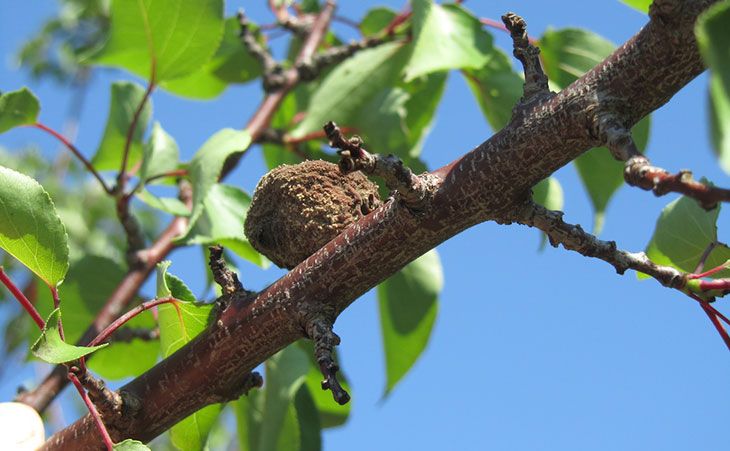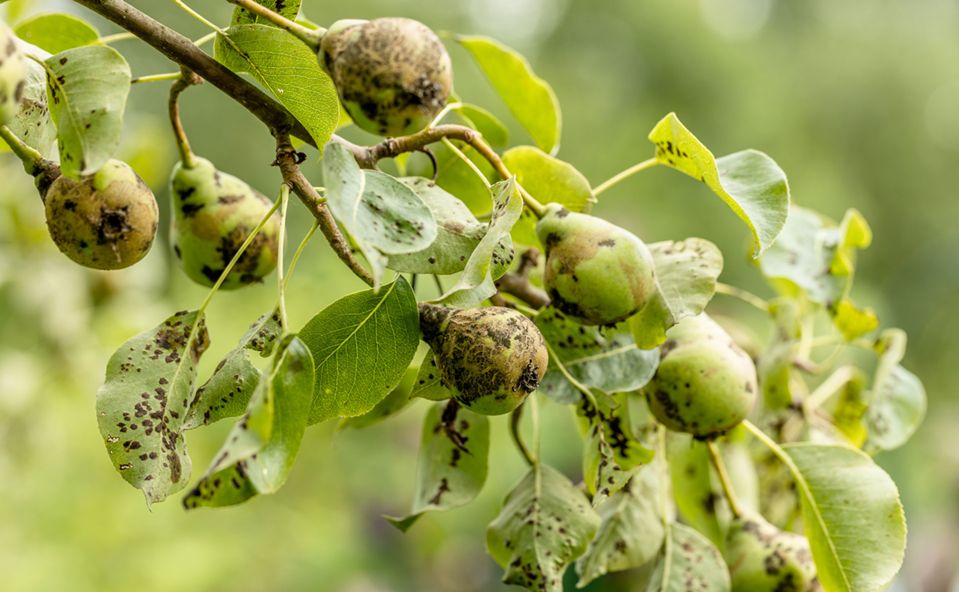What to Do About Brown Rot

Brown rot is a fungal disease that commonly affects stone-fruit trees like peaches and cherries. Learn how to control brown rot in your fruit garden.
One of the most asked-about issues for stone-fruit trees, especially after a consistently wet and humid spring, is brown rot. Brown rot affects the fruit tree's flowers and fruit crop. Healthy trees can survive it if they end up with brown rot, but it's best to control this disease as soon as possible. Fortunately, brown rot is easy to spot, prevent, and treat once you know what to look for and how to keep it from thriving in your fruit garden. In this article, we'll address some frequently asked questions about brown rot.
What is brown rot?
The common name given to a fungal disease caused by the species, Monilinia fructicola.


What does brown rot look like? What are the visible signs?
- Brown, wilted blossoms (common site of infection).
- Dark, sunken spots on new shoots and brown, hanging leaves on infected limbs.
- Affected fruit develops small spots of rot that enlarge quickly.
- Rotted fruit develops fuzzy tan/grey spores that cover the fruit surface.
- If left on the tree, fruit shrivels, darkens, and hardens into "mummies".
- If mummies are left on the tree or on the ground around the tree, fungal cycle is able to continue and recontamination occurs.
Which fruit trees are affected by brown rot?

Stone fruit trees (and their fruit):
- Apricots (and Apriums)
- Cherries (both Sweet and Sour types)
- Nectarines
- Peaches
- Plums (and pluots/plumcots)

Occasionally, brown rot is also thought to affect Apples and Pears, but this is not common.
What can be done to prevent brown rot?
Plant resistant varieties:

Keep a clean, maintained growing site:
- Plant in a well-drained location with full sun (6-8 hours during the growing season).
- Prune regularly to keep trees open to light and air circulation (fights fungi).
- Remove any pruning or landscaping debris to avoid sites for fungi to thrive.
- Remove any damage or diseased fruit and limbs. These are more susceptible to infection.
- Thin fruit. Fruits that touch may pose disease risk.
Find more benefits of thinning fruit here.

What can be done to treat brown rot in fruit trees?
Proper sanitation:
- Prune out all signs of disease in limbs as soon as they appear. Clean pruners between cuts.
- Dispose of pruning and other debris to avoid recontamination – do not try to compost.
- Remove and dispose of all infected fruit. Do not leave them on the ground or try to compost.


Fungicide Spray:
- A wettable powder fungicide, a liquid concentrate fungicide, or natural copper-based fungicide spray/dust.
- Spray preventatively if brown rot is problematic in your areas, even before symptoms appear.
- Be sure the fungicide spray is recommended for use on the trees being sprayed (check label).
- Most spray applications start at pink-bud stage in spring and are repeated as needed.
- Follow instructions on the product label for specific application timing and frequency.
Now that you're familiar with brown rot, you can take action to prevent/control this fungal disease from taking over your anticipated fruit harvest. We highly recommend selecting and planting resistant varieties whenever possible. Maintaining a clean growing site and keeping your fruit trees in great shape through pruning and routine inspection will help you prevent and spot any problems before they get out of hand. We also suggest exploring the resources listed below for more information.
Additional Resources About Brown Rot in Fruit Trees
- Ohio State University
- Virginia Tech
- Contact your county cooperative extension for local advice



